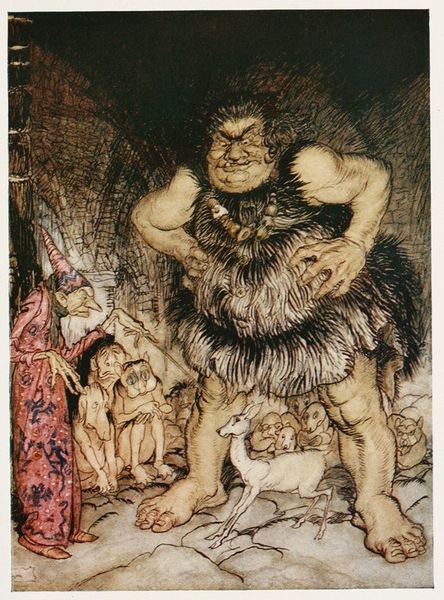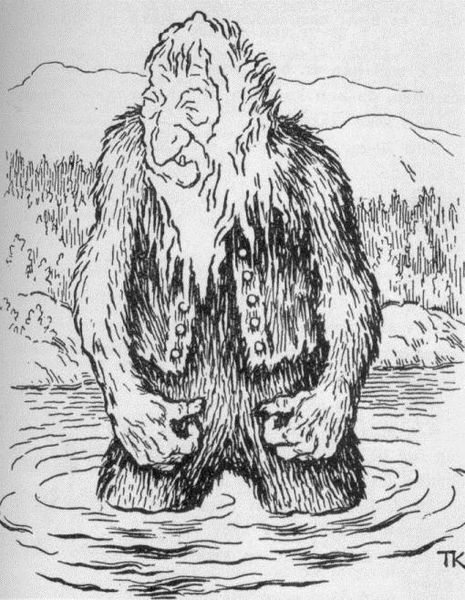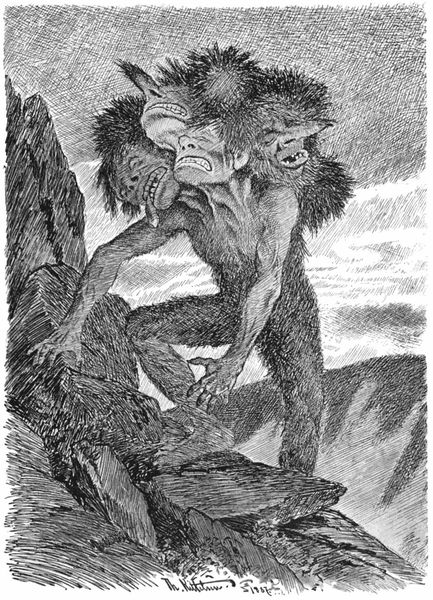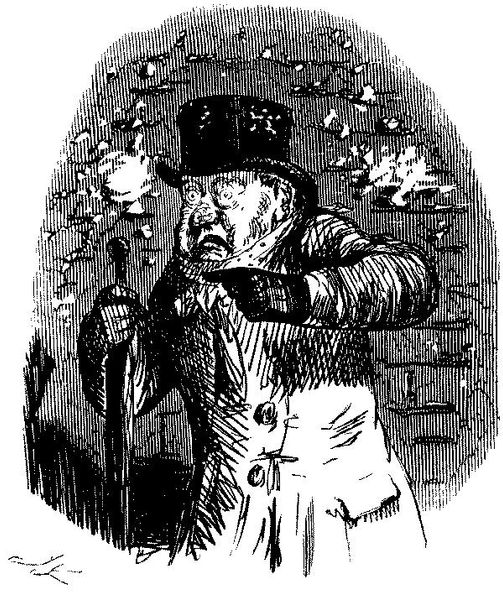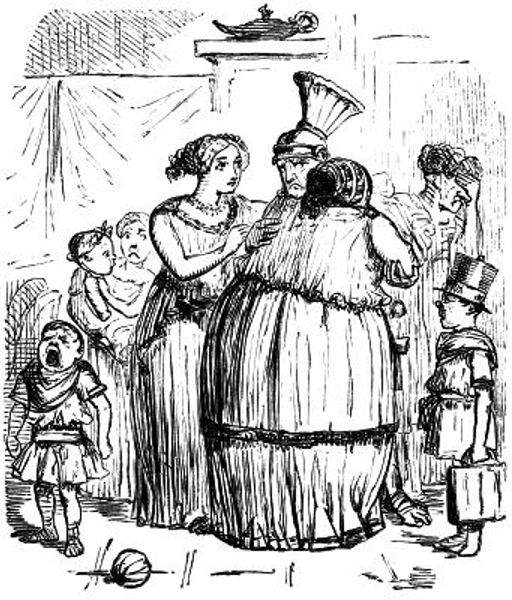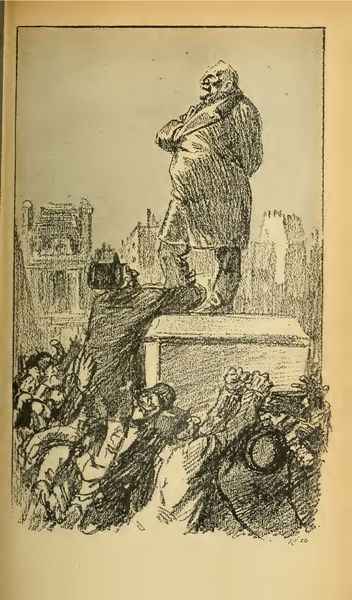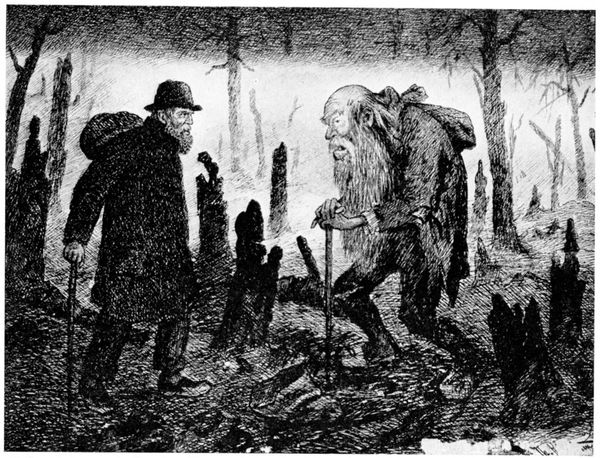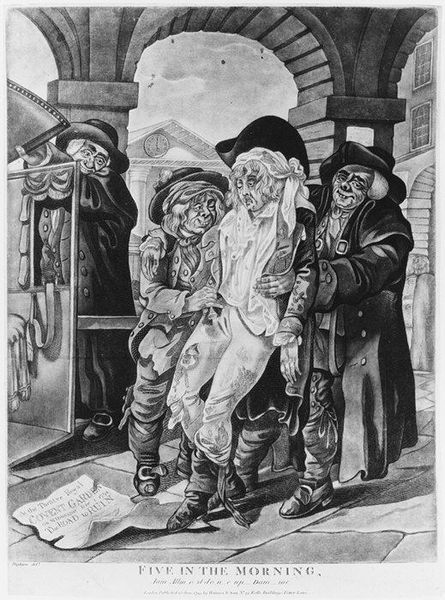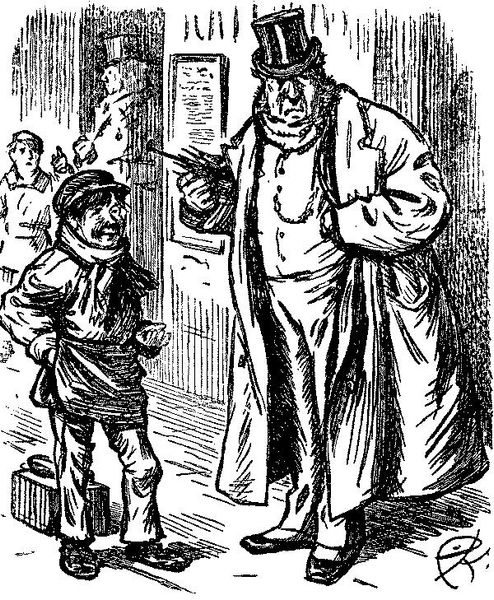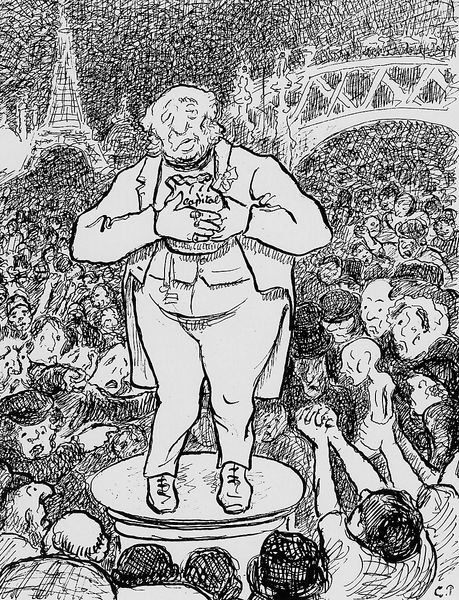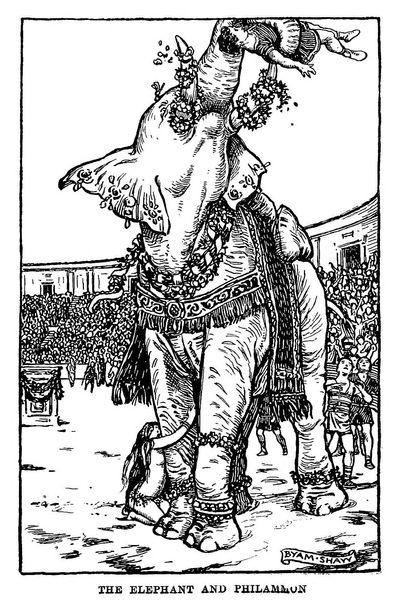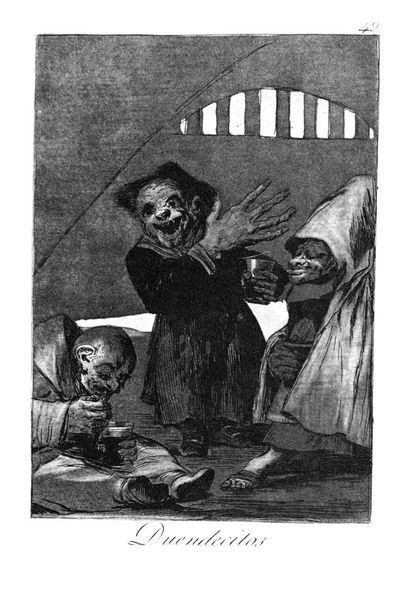
drawing, ink
#
drawing
#
narrative-art
#
landscape
#
ink
#
symbolism
Copyright: Public domain
Curator: Theodor Kittelsen's ink drawing, "Troll at the Karl Johan Street" from 1892 depicts utter chaos. The Troll towers over pedestrians; its sheer size overwhelms everything, causing mass hysteria. What's your initial take on this work? Editor: Well, it's certainly striking. The immediate impact comes from the contrast: a fantastical creature rendered with such detail and placed right in the middle of what appears to be a bustling city street. How should we interpret this clash of worlds? Curator: Consider the materials and the context of their use. Ink, a readily available medium, transforms the mundane street into a stage for social commentary. How might the troll’s scale and the pedestrian's panic reflect contemporary social anxieties? Editor: Perhaps the troll represents the anxieties of the era around industrialization and modernity encroaching upon traditional ways of life, hence it materializes to shake up everyday life. Do you see this work in dialog with social issues beyond the surface chaos? Curator: Absolutely. The drawing’s very materiality embodies a struggle—a challenge to established norms and modes of representation. Is Kittelsen suggesting a critique of the consumerist society that was rapidly emerging? Think about what mass production represents against individual agency. Editor: I didn’t think of it that way. It's fascinating how analyzing the base materials helps unpack the meaning, shifting our perspective from the narrative alone to a critique of production and its impact. I can see how ink on paper, though simple, facilitates a profound exploration of society's growing pains. Curator: Precisely. By understanding the labor involved and the availability of such materials, we understand art's accessibility and influence on the masses, further prompting critical societal questioning, even today.
Comments
No comments
Be the first to comment and join the conversation on the ultimate creative platform.
